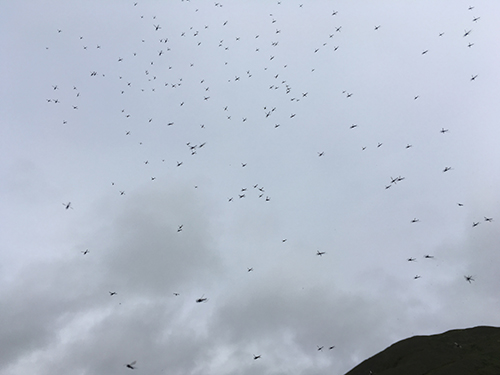 Mosquitoes in the sky. Photo by DJ Kast
Mosquitoes in the sky. Photo by DJ Kast
Welcome to the Arctic Tundra where mosquitoes are literally everywhere.
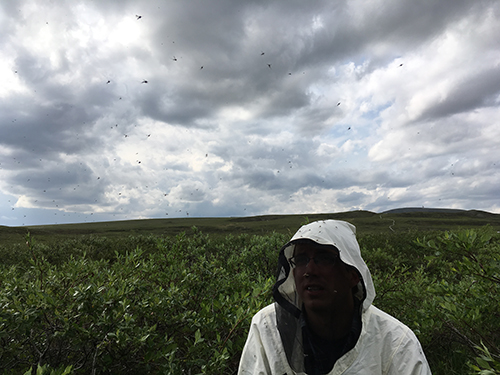 Jason Dobkowski covered in mosquitoes. Photo by DJ Kast
Jason Dobkowski covered in mosquitoes. Photo by DJ Kast
During the summer months, the Arctic tundra has the highest concentration of mosquitoes on the planet. There are so many that they swarm in the millions, which is why Alaskans jokingly refer to them as the “Alaska State bird”.
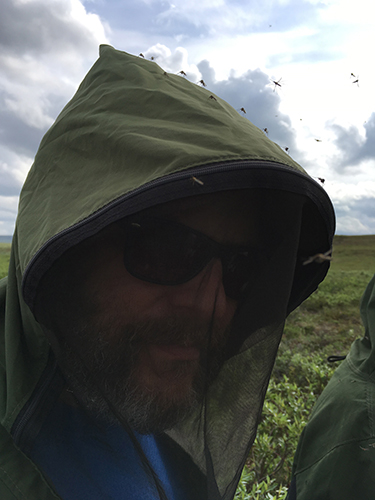 Byron covered mosquitoes. Photo by DJ Kast
Byron covered mosquitoes. Photo by DJ Kast
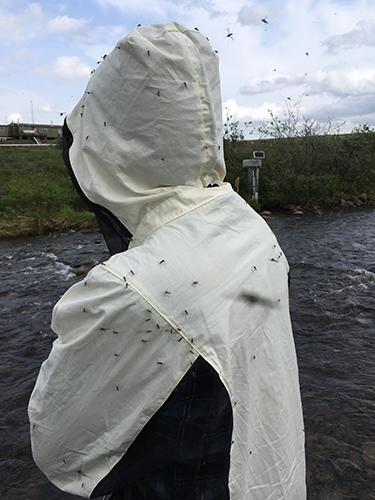 Jason Dobkowski with mosquitoes on his back. Photo by DJ Kast
Jason Dobkowski with mosquitoes on his back. Photo by DJ Kast
Ironically, the mosquitoes are the main pollinators of the Arctic Tundra because the male mosquitos feed on nectar and pollen. It’s the females that bite! The females bite any warm blooded animal (people, birds, caribou …anything) and inject their saliva into the wound causing swelling and irritation.
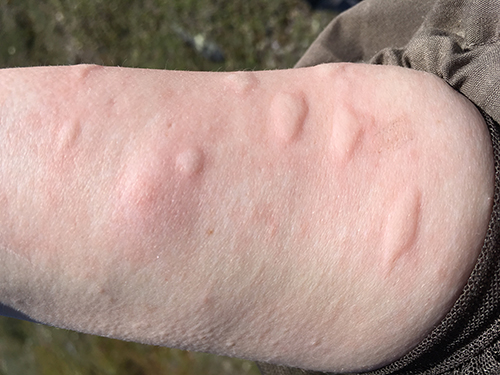 My mosquito bites. Photo by DJ Kast
My mosquito bites. Photo by DJ Kast
They bite us or other animals and use the protein and iron found in blood to make their eggs. Females also feed on nectar.
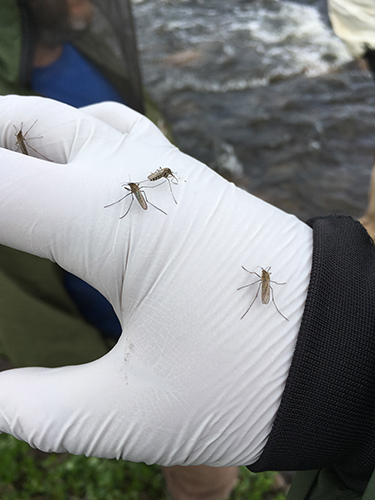 Mosquitoes on my hand. Photo by DJ Kast
Why are there so many???
Mosquitoes on my hand. Photo by DJ Kast
Why are there so many???
The Arctic tundra is reasonably flat, and so from Toolik you can see pretty far in almost every direction. But that means that when the winter snow and ice melts during the summer a lot of the water stays on the wet landscape. Also, the Arctic tundra sits on top of frozen permafrost soils, which creates a barrier between the surface soil and the bedrock preventing water from sinking further down into the soils. Consequently, there are thousands of stagnant shallow pools of water and wetlands that provide the ideal breeding areas for mosquitoes. Plus if you add in the 24 hours of daily sunlight the stagnant pools are warmed up and this turns those pools into mosquito incubators.
Mosquitoes and Climate Change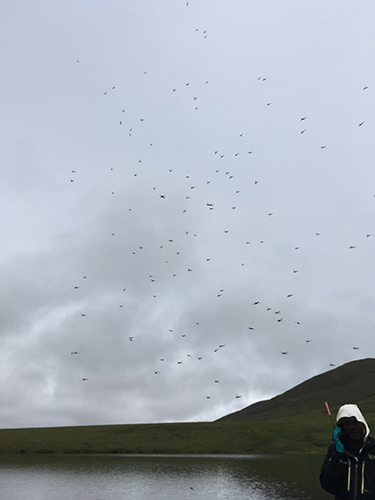 Jason Dobkowski using the sat phone in the mosquito swarm. Photo by DJ Kast
Jason Dobkowski using the sat phone in the mosquito swarm. Photo by DJ Kast
As temperatures in the Arctic tundra get warmer, mosquitoes emerge earlier, grow faster, and survive longer during the summer months.
The study (http://rspb.royalsocietypublishing.org/content/282/1815/20151549) found that if the Arctic warms by 3.6 degrees Fahrenheit (2 degrees Celsius), 50 percent more mosquitoes could survive to adulthood. NOOOOoooo.
The caribou is the Arctic animal that besides us humans that will be most affected by an increasing number of mosquitoes. They are already the main blood donors (involuntary) to the mosquitoes on the North Slope of Alaska. The caribou don’t have a means of escaping the bugs unlike us (DEET, mosquito netting, bug shirts, etc.). They are only able to escape by running as fast as they can away from them or going swimming in a lake. More mosquitoes means more running and less eating, leading to stressed and unhealthy caribou populations. Baby caribou are especially vulnerable, and often die while trying to escape mosquitoes.


Comments